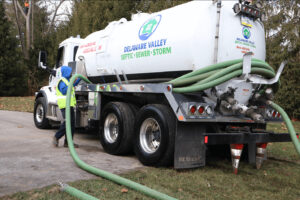As a rural homeowner, you’ve probably heard the term percolation testing in the past. Percolation involves the movement of fluids through absorbent materials, and while it sounds like something only scientists care about, that’s not the case. Knowing the percolation rate of the soil is essential for your home’s septic system. But why, and how does a perc test work in the first place? Here’s an overview of why soil percolation testing is so important for your property.
What Is a Perc Test?
In a nutshell, percolation testing is meant to determine the rate at which soil absorbs moisture. This involves assessing the composition of the soil and identifying its texture, structure, and other characteristics. Percolation rates are directly affected by the particle size of the soil, meaning that it will be higher or lower depending on how quickly water passes through it.
Why Are Perc Tests Important?
Now that you understand the basics of what a perc test is, you’re probably wondering why it’s done at all. What does anyone gain from knowing the permeability of the soil on their property? The answer lies in the performance of septic systems.
Septic tanks contain wastewater and the job of a tank is to separate water from whatever’s not water while in the tranquil environment. The liquid, called effluent, then travels through a pipe below the ground and drains into the soil surrounding the system. In order for this process to work properly, the soil needs to be porous enough for the liquid to drain sufficiently. As a result, septic systems require soil of a specific perc rate to function properly. This means that soil with a high amount of rock or clay is not suitable for a septic tank.
Knowledge of your property’s perc rates helps you determine the best area to install your home’s septic system. Sometimes, a house can’t be built at all if the surrounding soil isn’t permeable enough. Because of its importance, perc tests are required for homeowners planning to build a new septic system or replace an old one.
How Does a Perc Test Work?
Without the right percolation rate, rural homes wouldn’t be able to have a properly working septic system. But how does a perc test work, exactly? In most cases, the test procedure is a relatively straightforward process.
During the perc test, a hole will be dug in the soil at a predetermined depth and filled with water to a fixed reference point. The drop or ability to drain water in timed intervals determines that area’s perc rate. More specifically, it’s calculated by dividing drop and time to determine how long each hole takes to drain an inch of water. There are other more complicated perc tests that involve multiple holes several feet deep, removing the dirt, and performing more extensive measurements called double ring infiltrometer testing, which is used to determine stormwater management infiltration rates. However, what is described below is called falling head testing and is used to determine the size a septic system has to be to support the size of the home.
More often than not, Perc tests are performed by licensed testers who have the background to conduct the test properly and know precisely how perc tests work.) When soils reach saturation the infiltration rates stabilize and yield consecutive readings within a quarter inch of each other the infiltration testing is finished. An official percolation report with the test’s infiltration results will be given to the records of your local health department for future use.
If your home needs a perc test in PA, reach out to Delaware Valley Septic, Sewer & Storm today. We offer professional septic inspections and other services to ensure your home has a functional septic system. Contact us for more information and to schedule your appointment.




